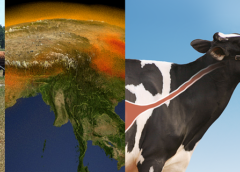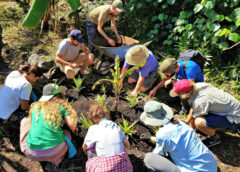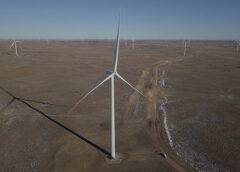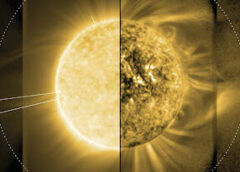Category: Project Green
-
Helping farmers to reduce GHGs and improve resiliency to climate change

SHERBROOKE, QC – Today, the Minister of Agriculture and Agri-Food, the Honourable Marie-Claude Bibeau, launched a call for proposals for the On-Farm Climate Action Fund, a new fund under Agricultural Climate Solutions. Starting this year and until 2024, the $200-million Fund will provide direct support to farmers to adopt beneficial management practices that store carbon and reduce greenhouse gas…
-
NASA at Your Table: Where Food Meets Methane

Methane Emissions Today, human sources are responsible for 60% of global methane emissions, coming primarily from the burning of fossil fuels, decomposition in landfills and the agriculture sector. Nearly a quarter of methane emissions can be attributed to agriculture, much of which is from raising livestock. Rice cultivation and food waste are also important sources of agricultural methane,…
-
Pacific Quest Partners with Cool Effect for Reduced Carbon Footprint.

HILO, Hawaii — Paicific Quest has partnered with Cool Effect to offset a carbon footprint of over 200 tonnes annually. Cool Effect is a 501c non-profit organization that partners with private and public entities, including 3M, American Airlines, and Sales Force, to offset operational carbon emissions. Cool Effect funds novel emission reduction projects around the world, and provides a transparent,…
-
Assessing the Global Climate in July 2021

July 2021 was the warmest July on record for the globe; global land surface was also record warm Global Climate The global temperature for July 2021 was the highest for July in the 142-year NOAA record, which dates back to 1880. The year-to-date (January-July) global surface temperature tied as the sixth highest on record. According…
-
Bold Action Must Continue to Realize Electrified Future

President Biden recently took a positive step toward new federal vehicle emissions standards that include the Administration’s bold objective to advance America’s electric vehicle future. In so doing, the Biden Administration is aligned with the similarly bold actions taken two years ago by Honda, BMW, Ford, Volkswagen and Volvo, which entered into voluntary agreements…
-
Seeing the Sun in a New Light

Innovative observations of the solar corona could improve space weather forecasts Using a NOAA telescope in a novel way, researchers from the Cooperative Institute for Research in Environmental Sciences (CIRES) working in NCEI captured the first-ever images of dynamics in the sun’s elusive middle corona. The observations, from the Solar Ultraviolet Imager (SUVI) on NOAA’s GOES-17 satellite,…
-
Hyundai’s XCIENT Fuel Cell Hitting the Road in California

Hyundai Motor to collaborate with public and private partners to deploy Class 8 fuel cell electric trucks for regional freight distribution in California NorCAL ZERO, where Hyundai supplies 30 XCIENT Fuel Cell by early 2023, to be the largest deployment of Class 8 hydrogen-powered vehicles in the U.S. Hyundai is committed to developing hydrogen mobility…
-
4 safety tips for summer weather hazards

It’s what we’ve waited for: Summer! Though the season brings longer, sunnier days, it also comes with life-threatening weather hazards such as extreme heat, rip currents, and thunderstorms and lightning. 1. Excessive heat. It’s a killer. Heat is one of the most deadly weather hazards, so don’t underestimate it. Warm temperatures can quickly rise to dangerous…
-
When to Expect the Warmest Day of the Year

During the summer months, most areas in the United States approach their highest temperatures for the year. To give you a better idea of the warmest time of year for your area, NCEI has created “Warmest Day of the Year” maps with the help of Climate.gov for the contiguous United States, Alaska, Hawaii, and Puerto Rico. The maps are derived from the 1991–2020 U.S.…
-
What is a North American Monsoon? (video)

The North American monsoon, variously known as the Southwest monsoon, the Mexican monsoon, the New Mexican monsoon, or the Arizona monsoon, is a pattern of pronounced increase in thunderstorms and rainfall over large areas of the southwestern United States and northwestern Mexico, typically occurring between July and mid-September. During the monsoon, thunderstorms are fueled by daytime heating and build up during the late afternoon and…
